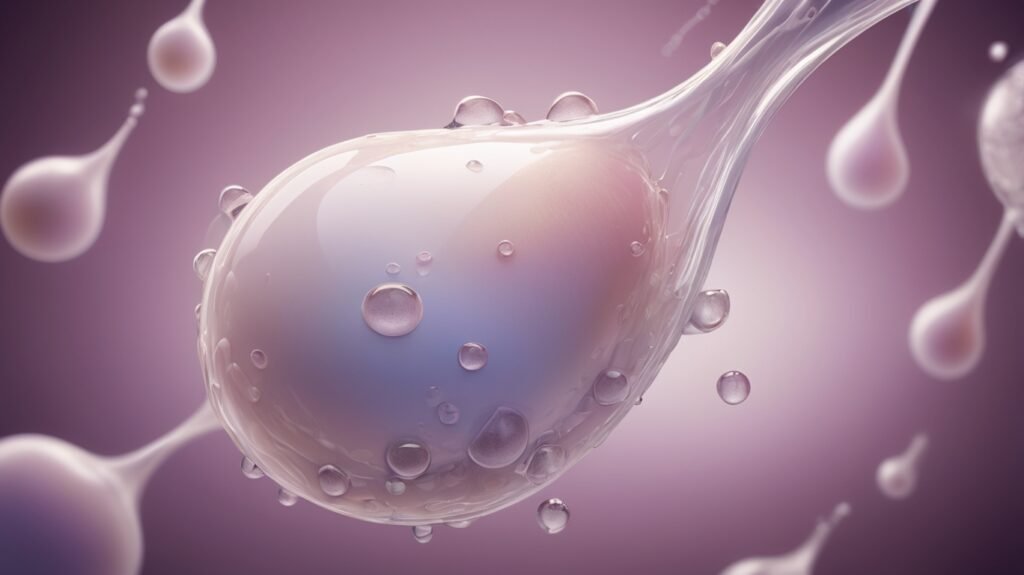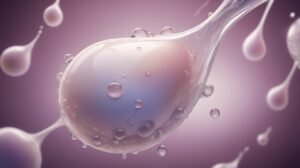Why You Should Trust Your Gut Feelings
Most people underestimate the power of gut feelings, often dismissing them as mere instincts or hunches. However, you should recognize that these instincts stem from your brain’s ability to process vast amounts of information quickly, guided by past experiences and emotional cues. Trusting your gut can lead you to make better decisions and avoid potential dangers, as it taps into your subconscious knowledge. By learning to listen to your intuition, you empower yourself to navigate complex situations with confidence and clarity.
Key Takeaways:
- Gut feelings often stem from subconscious processing of past experiences and knowledge.
- Intuitive insights can be particularly valuable in decision-making when faced with uncertainty or risk.
- Listening to your instincts can enhance creativity and problem-solving by integrating emotional intelligence.
- Trusting your gut can improve personal well-being and confidence in making choices aligned with your values.
- Balancing intuition with rational analysis can lead to more comprehensive decision-making outcomes.
Understanding Gut Feelings
Definition of Gut Feelings
About gut feelings, they are often described as those instinctive hunches or intuitions that arise from deep within you. These feelings can guide your decisions, urging you to take action or refrain from certain paths based on an inner sense of what feels right or wrong. While they may seem subjective or spontaneous, gut feelings are more than just fleeting thoughts; they tap into your subconscious mind and past experiences, providing insights that you may not be consciously aware of. Your ability to recognize and trust these feelings can significantly influence your choices in various aspects of life.
The Science Behind Gut Instincts
Above all, gut instincts are rooted in the way your brain processes information. Your gut contains a complex network of neurons known as the enteric nervous system, which communicates directly with your brain. This system informs your brain about what is happening in your digestive system, but it also plays a role in emotional responses. Research shows that when you’re faced with a decision, your brain and gut communicate to create a holistic response based on experiences and emotions. This interplay can often manifest as a “gut feeling” that pushes you toward action.
Due to the sophisticated connection between your brain and gut, it’s important to pay attention to those instinctual nudges. They can arise from both emotional cues and historical data accumulated from experiences, forming a nuanced understanding that may guide you toward positive or detrimental outcomes. If a situation feels off or a choice resonates with you, it could be your body’s way of signaling what is best for you. Learning to interpret these signals can lead to more informed and confident decision-making in your life.
The Role of Emotions in Decision Making
If you have ever made a decision that felt right in your gut, you are not alone. Emotions play a vital role in the decision-making process, often serving as a compass that guides you through complex choices. While logic and analysis are important tools, they can only take you so far. Your emotions provide context and meaning to situations, helping to shape your values and priorities. When you tune in to your feelings, you open up a pathway to deeper insights that your analytical brain might overlook, allowing you to make more informed and balanced choices.
Emotional Intelligence and Intuition
Across various situations, your level of emotional intelligence can significantly influence the quality of your intuition. Emotional intelligence involves the ability to recognize, understand, and manage your emotions, as well as to empathize with others. By developing this skill, you enhance your capacity to tap into intuitive feelings that arise in response to your experiences. You begin to understand not only your own emotional responses but also how these feelings can inform your decisions. This connection between emotional intelligence and intuition is imperative for recognizing when to trust your gut and when to seek further information.
Recognizing True Gut Feelings vs. Anxiety
Emotions can often blur the lines between genuine gut feelings and anxiety, which may lead you to make hasty decisions based on fear rather than intuition. Your gut feelings are typically calm, steady, and align with your core values, while anxiety might manifest as a nagging worry or a sense of urgency that feels unsettling. To discern between the two, you should practice self-reflection and mindfulness. This can help you better understand the source of your emotions, providing clarity to your decision-making process.
For instance, acknowledging the context of a situation when you feel anxious can reveal whether your instincts are signaling a protective warning or if they stem from stressors unrelated to the decision at hand. If your gut feeling is causing you to feel a sense of excitement or motivation, it is likely a true instinct. On the other hand, if you are experiencing nervousness or a sense of dread, it’s imperative to evaluate if anxiety is influencing your perspective. Being aware of these emotions allows you to rise above the noise, leading to more thoughtful and empowering decisions.
The Benefits of Trusting Your Gut
Once again, it’s important to recognize that trusting your gut feelings can lead to profound positive changes in your life. By embracing this intuitive power, you position yourself to make decisions that are not just informed by logic or external opinions, but also by your own instinctual insights. This approach not only fosters a greater alignment with your personal values and desires, but it also enhances your overall decision-making skills. Your gut feelings often stem from a combination of past experiences, observations, and emotional responses, creating a rich tapestry of understanding that you can leverage when faced with choices.
Enhanced Decision-Making Skills
Benefits of trusting your gut include the development of enhanced decision-making skills. When you allow your intuition to guide you, you may find that your ability to assess situations improves dramatically. Instead of relying solely on analysis or advice from others, you tap into your inner knowledge. This enriches your decision-making process, often leading to quicker and more satisfying outcomes. Your gut can help you filter through complex information and identify what truly resonates with your goals and aspirations, streamlining your choices and reducing decision fatigue.
Building Self-Confidence
Across different areas of your life, trusting your gut is imperative for building self-confidence. As you cultivate this trust, you begin to feel more assured in your decisions and actions. Each time you listen to your inner voice and see positive outcomes, your confidence grows. This newfound assurance can spill over into various aspects of your life, from personal relationships to career choices, enabling you to approach situations with a strong sense of self-belief.
The journey of building self-confidence through your gut feelings is an empowering experience. The more you engage with your intuition, the more you learn to appreciate your unique perspective. Each successful decision reinforces your confidence, encouraging you to embrace future challenges with a proactive mindset. As you continue to trust your gut, you will create an unshakeable foundation of self-assurance that enhances your overall well-being and effectiveness in navigating life’s uncertainties.
Situational Awareness and Gut Feelings
Despite the complexity of human emotions and thought processes, your gut feelings often serve as an immediate response to various situations. When you find yourself in unfamiliar circumstances or when facing difficult choices, your subconscious can draw on accumulated experiences, leading you to make instinctive decisions. This is known as situational awareness, where your intuition plays a vital role in assessing your surroundings and guiding your choices effectively. Understanding the relationship between your feelings and your environment can enhance your ability to respond appropriately to challenges.
The Impact of Experience
On many occasions, your gut feelings are shaped by past experiences and the lessons learned from them. As you navigate through life, your brain records numerous interactions, outcomes, and behaviors that inform how you respond in new situations. Therefore, when you feel an instinctual pull towards or away from something, it’s often your brain’s way of recalling similar past scenarios, analyzing their results, and advising you on what may be best in the current moment. Trusting this feedback can ultimately lead to more beneficial decisions.
Cultural and Social Influences
By understanding the cultural and social influences on your gut feelings, you can gain deeper insights into why you react a certain way in different contexts. Your upbringing, the values instilled in you, and the societal norms that surrounded you shape your instincts and perceptions. Thus, various cultures may instill differing meanings behind certain gut reactions, which can affect how you respond to situations. Acknowledging these influences allows you to better understand the motivations behind your feelings and how they might differ from those of others.
Further exploring these cultural dynamics can shed light on how social environments, peer expectations, and group dynamics impact your intuition. The feelings you experience may often be influenced by the norms of your community, leading to either heightened awareness or a tendency to suppress your instincts. Moreover, engaging with diverse perspectives can refine your ability to interpret gut feelings, allowing you to adapt your responses based on a wider understanding of social cues and cultural contexts.
Strategies to Improve Gut Instincts
Not all gut feelings are equally reliable, but developing a more accurate intuition requires a proactive approach. One effective strategy is to cultivate mindfulness and self-reflection in your daily life. By becoming more aware of your thoughts and emotions, you can better discern the sources of your instincts. Mindfulness practices, such as meditation or deep breathing, enable you to tune into your body and emotions, helping you recognize patterns in your feelings that guide your decision-making process. This increased self-awareness creates a clearer lens through which you can evaluate your gut reactions.
Mindfulness and Self-Reflection
For you to enhance your gut feelings, engaging in mindfulness and self-reflection can be highly beneficial. Start by setting aside a few minutes each day to contemplate your experiences and emotions. Journaling your thoughts, practicing gratitude, or simply observing your reactions to various situations can help increase your understanding of how your instincts operate. Over time, this practice helps you differentiate between emotional responses rooted in fear or anxiety and those that genuinely stem from your intuition, thus strengthening your decision-making abilities.
Keeping a Decision Journal
An effective method for honing your gut instincts is to keep a decision journal. This journal can serve as a space for documenting the choices you make, including the gut feelings associated with those decisions and their outcomes. By recording the details of your thought process, you can identify patterns over time that shed light on your instinctual responses and their effectiveness. Ultimately, this knowledge empowers you to leverage your gut feelings more accurately in future situations.
Improve your decision-making by remaining consistent with your decision journal practice. Take the time to write down not only the decisions you make, but also the situation at hand, your emotional state, and the instincts that influenced you. As you review your entries, you will likely notice recurring themes and patterns that indicate how reliable your gut instincts are in various contexts. This insight can help you trust your instincts more authentically and effectively, leading to better life choices in the long run. Your instincts can evolve and improve with attention and practice, transforming the way you navigate important decisions.
Common Misconceptions about Gut Feelings
All too often, gut feelings are dismissed as mere whims or irrational impulses. Many people believe that feelings stemming from your intuition are based on emotions rather than logic. This misconception can lead to the undervaluation of your own inner guidance, causing you to disregard important cues that your body and mind are trying to communicate. Additionally, it is often thought that intuitive decisions lack a factual basis or are only valid under specific circumstances, which undermines the fact that gut feelings can often draw from a wealth of experiences and knowledge hidden in your subconscious mind.
Myths vs. Facts
For every myth about gut feelings, there lies an underlying fact that highlights their importance. One prevalent myth is that gut feelings are simply wishful thinking or guesswork. In truth, your intuition possesses a rich foundation built upon years of accumulated experiences, allowing you to quickly assess situations without immense deliberation. Another myth is that you should rely solely on logic and ignore feelings altogether; however, studies have shown that our gut reactions can often be more reliable than cognitive analyses, especially in fast-paced or emotionally charged situations.
Overcoming Doubt in Intuition
Any time you rely on your intuition, doubt can linger. It’s common to second-guess yourself, especially when confronted with conflicting information. The key to overcoming this doubt lies in recognizing that your gut feelings are valid sources of guidance, shaped by your past experiences and knowledge. Instead of questioning your instincts, consider using them as a compass that can lead you toward better decision-making. Trusting your gut can create an empowering cycle of confidence in your intuitive abilities, allowing you to navigate life’s challenges with greater ease.
Myths surrounding intuition often deter you from embracing this valuable aspect of yourself. The misconception that intuition is unreliable or frail can lead you to dismiss gut feelings when they are actually rooted in your own experiences and insights. Understanding that intuition serves as a helpful tool rather than a misguided impulse can transform how you approach decision-making. By acknowledging this, you can cultivate a stronger connection with your intuitive sense and experience the undeniable benefits of trusting your gut feelings.
Final Words
From above, it’s clear that trusting your gut feelings can significantly improve your decision-making process. Intuition is often based on your subconscious mind synthesizing past experiences, knowledge, and emotions. When you allow yourself to tune into these internal cues, you tap into a reservoir of wisdom that may guide you towards choices that feel more aligned with your true self. This instinct often serves as a reliable compass, especially in situations that lack clear-cut answers or when you are faced with uncertainty.
By honing your ability to listen to your gut, you not only strengthen your self-awareness but also enhance your confidence in making choices. Embracing this intuitive skill can lead to greater satisfaction in both personal and professional realms. So, the next time you encounter a decision that leaves you feeling uneasy, take a moment to reflect on your instincts. Trusting your gut can unveil new perspectives and insights that logic alone might overlook, ultimately leading you toward a path that feels right for you.
Q: What does it mean to trust your gut feelings?
A: Trusting your gut feelings refers to the instinctive reactions or intuitive judgments we experience when making decisions. These feelings often arise from our subconscious mind, which processes experiences and emotions that we may not be fully aware of. By listening to these internal signals, individuals can navigate choices more effectively, often leading to outcomes that align with their values and instincts.
Q: How can trusting my gut feelings improve my decision-making?
A: Trusting your gut can enhance decision-making by providing insights that are informed by your personal experiences and emotional intelligence. Often, when faced with a choice, your instincts pull from a wealth of past situations, helping you identify what feels right or wrong. By paying attention to these feelings, you may find that you make choices that are more authentic to you and better suited to your needs, even if they don’t always align with logical reasoning alone.
Q: Are there situations where trusting my gut might not be advisable?
A: Yes, there are scenarios where relying solely on gut feelings may not be the best approach. Complex decisions that require thorough analysis, factual data, or expert opinions may benefit from a more analytical process rather than instinct alone. It’s important to balance your gut feelings with critical thinking, especially in high-stakes environments or situations where emotions might cloud judgment. Integrating both intuition and analysis can lead to more informed and effective decision-making.


















